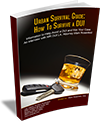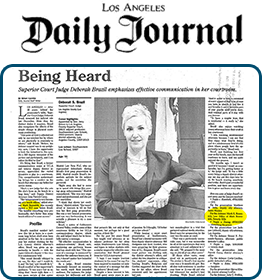Every year, there are changes to the legal statutes of DUIs, with increased penalties and expansion of the length of the look-back period or probation terms.
One of the more recent modifications is to change the different subsections or different code sections relating to DUI. There was only one driving under the influence charge for many years, and that was the “Driving Under the Influence of Alcohol or Drugs or a combination of both,” but then they added a specific blood alcohol level so the person could be charged with driving under the influence or driving with a blood alcohol level that was 0.08 or above. It actually used to be 0.10 or 0.15 even before that, but then they constantly moved that down.
Most recently, they divided DUIs into different sections so they could track and maintain statistics on what types of DUIs people were getting. There could be a regular DUI for driving under the influence, and it would not say whether it was just alcohol or drugs or a combination of both.
There are other code sections, such as 23152(b) for driving under the influence of alcohol with a blood alcohol level of 0.08 or above. They separated driving under the influence of drugs and driving under the combined influence of alcohol and drugs so they could better track what types of chemicals were impairing or potentially impairing people’s driving so they could allocate funds and do a better job with keeping their statistics in line.
We have now a growing field of driving under the influence of drugs, which could be prescription drugs or legal drugs that were prescribed by a doctor, or it could be drugs that were obtained after getting a recommendation from a doctor such as marijuana, or it could even be illegal drugs. All of these would fall under 23152(e), meaning driving under the influence of drugs.
There is nothing called “Per Se” limits with drugs. The person would have to be a 0.08 or above at the time of driving for the charge of driving under the influence of alcohol, and they would basically presume the person was impaired, per se. With drugs, there are no per se limits, and there would be no specific amount of active or inactive metabolite; in California, that would indicate whether or not someone was impaired, because it would be very difficult to determine from one person to the next what an impairing dose would be.
Somebody might be on a prescription medication such as Vicodin for back pain, and they may have been taking Vicodin for many years. They would require a certain therapeutic dose for the drug to work but that amount would not impair their ability to drive and it would not impair their ability to think, whereas it might in fact impair someone else’s driving ability who took that same amount the first time they had exposure to it. Unlike alcohol, with drugs the science and literature are not there to support an overall impairment level in all people.
DUI drug cases are much more difficult for the prosecution to prove because they contain a lot of good defenses as far as person to person variability as well as what the affect would be on a particular person and how it may or may not impair somebody.
Many drugs that people think would be dangerous to drive with in their system may actually improve their driving, whether it was low or moderate doses of THC or marijuana or even a stimulant such as Speed and Cocaine. This would, of course, vary from person to person, and it would also be affected by the amount in the person’s system that was active at the time.
The charge of DUI drug is the growing trend. Law enforcement agencies, whether the Los Angeles Police Department or California Highway Patrol, are receiving extensive training in DUI drugs to capture as many potential DUI drug drivers as they can.
Are the Penalties for Drug DUI the Same or Worse in a Standard DUI?
The penalties for driving under the influence of drugs would be very similar, if not the same as they would be for a regular DUI. There may be some differences regarding the person’s driver’s license issue or DMV issues, although with regards to the court case, somebody who was convicted of driving under the influence would face certain mandatory penalties that would be the same for alcohol or drug DUIs.
There would be a probation period where the person would have to comply with certain terms and obligations of the court. There would be fines and fees, alcohol and drug driver education classes, and depending on how the case was handled and how it was resolved, there may or may not be a requirement for an ignition interlock device. There would definitely be mandatory penalties for DUIs and most of those would be the same, whether it was for DUI alcohol or drugs.
For more information on Drug DUIs, a free initial consultation is your next best step. Get the information and legal answers you’re seeking by calling (310) 424-3145 today.






 Personal Attention
Personal Attention Every criminal case is unique and no attorney can guarantee the outcome of a case. The information on this site is legal advertising and for general information only. Using this site, requesting books, information, consultations or communicating with Attorney Rosenfeld through its site does not form an attorney/client relationship.
Every criminal case is unique and no attorney can guarantee the outcome of a case. The information on this site is legal advertising and for general information only. Using this site, requesting books, information, consultations or communicating with Attorney Rosenfeld through its site does not form an attorney/client relationship.








